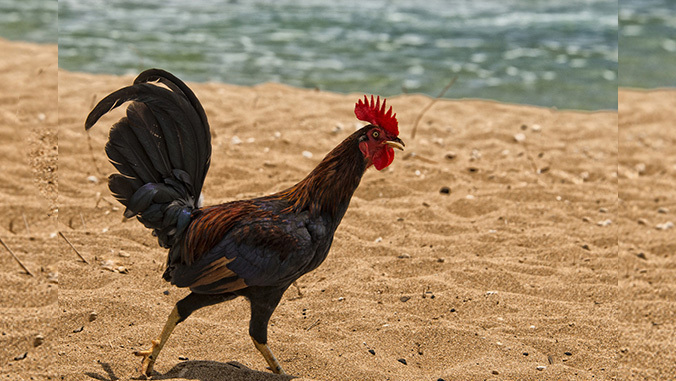Feral chicken guts hold clues to improving health

In Hawaiʻi, there is a relatively high number of feral chickens, commonly seen on roads and in parking lots. These feral chickens are of scientific interest, as they can provide clues about the modern-day chicken’s biology. However, until now, there was limited or no knowledge of the gut microbiota of these feral birds.
That’s according to Professor Rajesh Jha of the University of Hawaiʻi at Mānoa College of Tropical Agriculture and Human Resources (CTAHR) Department of Human Nutrition, Food and Animal Sciences.
For the first time, Jha’s research team sequenced the intestinal microbiota of the Hawaiian feral chicken and explored the cecal (referring to a specific part of the intestine) microbiota profile of commercial chickens.
“Since microbial populations are instrumental to their host’s health, we hope that our work will help determine what bacteria are dominant and what potential roles they play, either beneficial or non-beneficial,” said Jha.
Knowing the healthy gut microbiota composition provides opportunities to develop strategies to modify it for improving host performance, immunity and the food safety of meat animals.- Dr. Jha
Studying the microbial community profiles for feral and commercial chickens will be instrumental in understanding the breed differences in development, health, digestion, nutrient absorption and immunity.
The study appears in Poultry Science. More information about poultry nutrition and gut health can be found on the CTAHR Animal Nutrition Group website.
This work is an example of UH Mānoa’s goal of Excellence in Research: Advancing the Research and Creative Work Enterprise (PDF), one of four goals identified in the 2015–25 Strategic Plan (PDF), updated in December 2020.
Comments
Post a Comment